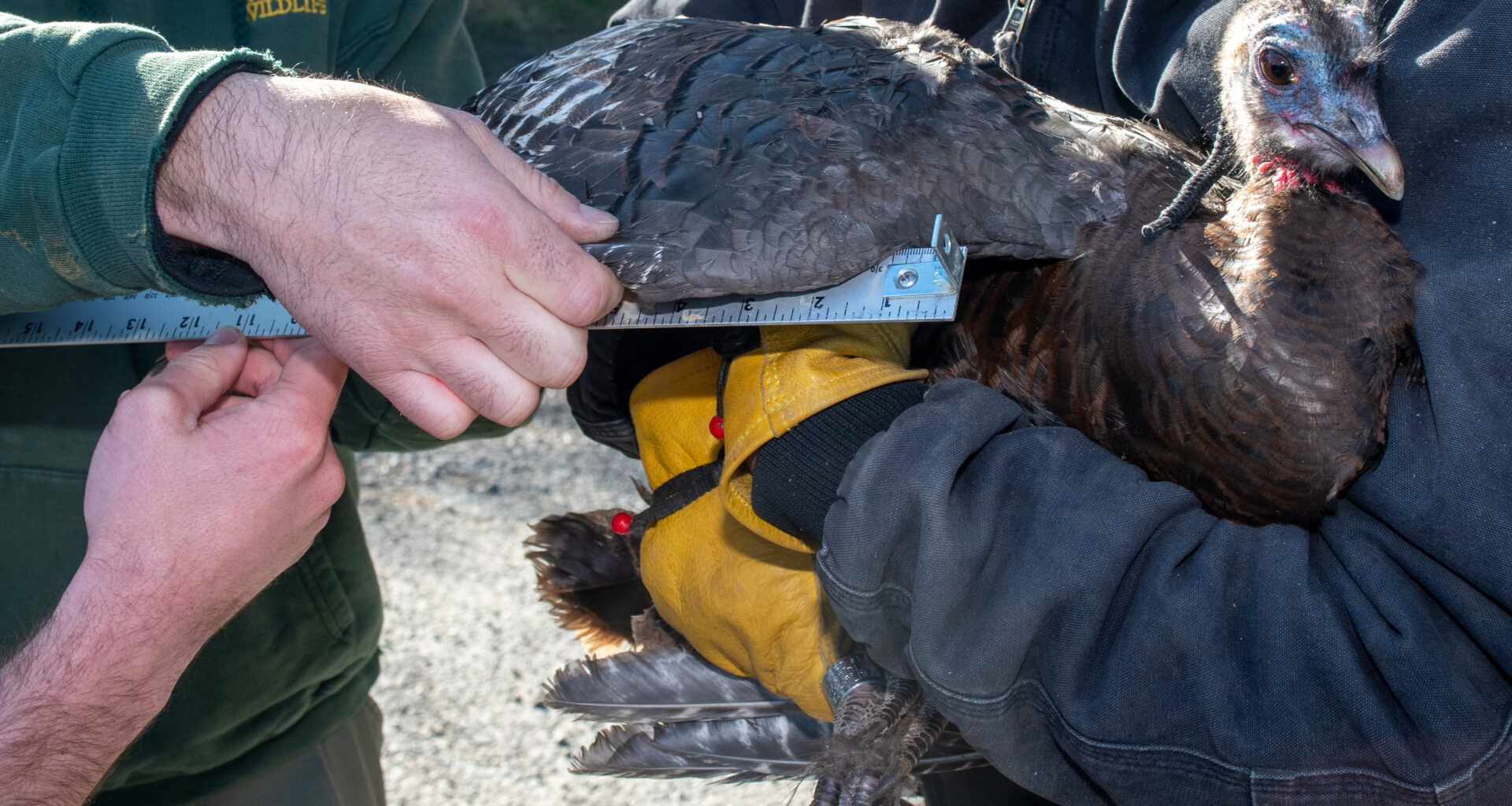The Ohio Department of Natural Resources (ODNR) Division of Wildlife and The Ohio State University are partnering to conduct a multiyear study on the survival and nest success of female wild turkeys.
Ohio’s wild turkey abundance is thought to have peaked around 2001 and has fluctuated since then. Adult hen survival, nest success rates, and poult survival play a role in population levels. From 2017 to 2019, below-average hatches of turkey poults resulted in a decrease in wild turkey abundance. Hatches in 2021 and 2022 were above average.
To learn more about the factors that impact Ohio’s turkey populations, the Division of Wildlife joined a research collaboration which aims to understand wild turkey hen survival and nesting activity. Researchers affixed GPS transmitters to 49 female (hen) turkeys in southeast Ohio in February and March of 2023. The transmitters provide biologists information on turkey movement, survival, and nesting activity. Gathering turkey survival and nest timing data is essential for the Division of Wildlife to structure science-based turkey hunting regulations. Maryland, New Jersey, and Pennsylvania are performing similar studies in collaboration with the Division of Wildlife.
Since capturing hens and attaching transmitters, researchers have closely monitored the movement and activity of these birds. The winter turkey flocks split up in late March and early April, with hens traveling up to 5 miles from the capture location to establish nest sites. Hen mortalities and failed nests were investigated as quickly as possible to determine the cause. Most predation events occurred while hens were incubating eggs, because this is a period of increased vulnerability.
The ODNR Division of Wildlife remains vigilant in monitoring Ohio’s wild turkeys. Poults from successful nests were monitored and counted at two and four weeks of age. Hens will be monitored through fall and winter to examine movement, habitat use, and seasonal survival. The study will expand in 2024 by tagging and monitoring 100 additional hens. Young and hen turkeys will be tracked closely in the coming years.
The restoration of the wild turkey in Ohio is among the state’s most notable wildlife success stories. Wild turkeys were extirpated around 1904, and the Division of Wildlife began reintroducing wild turkeys to the Buckeye State in the 1950s. For the next five decades, the wild turkey population grew and expanded rapidly, facilitated by trap-and-transfer efforts. By 1999, wild turkeys were found in all 88 counties.
Ohio’s first modern day wild turkey hunting season opened in 1966 in nine counties, and hunters checked 12 birds. The total number of harvested turkeys topped 1,000 for the first time in 1984. Turkey hunting was opened statewide in 2000. The highest Ohio wild turkey harvest was in 2001, when hunters checked 26,156 birds.
Source, Photo: ODNR










